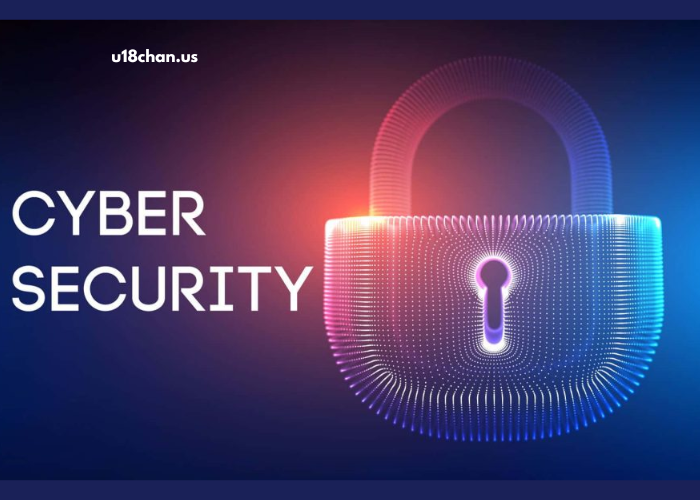In today’s increasingly connected world, online security is no longer a luxury—it is a necessity. With more and more individuals and businesses moving their operations to digital platforms, the risk of cyber threats has grown significantly. Cybersecurity has become a top priority for anyone who uses the internet, from casual social media users to large corporations handling sensitive information. To help protect your data online, it is essential to follow the best practices that safeguard against cyberattacks.
This article delves into effective cybersecurity strategies, offering practical steps to ensure your personal and business data remains safe from malicious threats. By adhering to these best practices, you can minimize your risk of falling victim to cybercrimes such as identity theft, ransomware, phishing, and data breaches.
Why Cybersecurity is Crucial
Before we dive into best practices, it’s important to understand why cybersecurity is vital in today’s digital age. With the internet becoming an integral part of everyday life, personal and sensitive information is more vulnerable than ever before. Cybercriminals have become more sophisticated in their attempts to infiltrate systems, steal data, and exploit vulnerabilities.
Some common risks to cybersecurity include:
- Data Breaches: Personal information, including credit card details and social security numbers, can be stolen during a breach.
- Ransomware Attacks: Hackers lock you out of your files or systems until a ransom is paid.
- Phishing Scams: Fraudulent attempts to obtain sensitive information by posing as legitimate entities.
- Malware: Software designed to damage or gain unauthorized access to computer systems.
In light of these threats, it’s crucial to take proactive steps to protect your data and digital assets. Below are several cybersecurity best practices that can help mitigate the risks associated with online activity.
Best Practices for Cybersecurity
1. Use Strong and Unique Passwords
Passwords are often the first line of defense against unauthorized access to your accounts. Weak passwords are an open invitation for hackers to break into your systems. To enhance security, it’s vital to use strong, complex passwords that are difficult to guess.
Tips for creating strong passwords:
- Length: Make passwords at least 12 characters long.
- Complexity: Use a mix of uppercase and lowercase letters, numbers, and special characters.
- Avoid Personal Information: Do not use names, birthdates, or easily guessable information.
- Use Password Managers: Password managers can generate and store strong passwords, helping you manage multiple accounts securely.
2. Enable Two-Factor Authentication (2FA)
Two-factor authentication (2FA) adds an extra layer of security to your online accounts by requiring two forms of verification. In addition to your password, you will need to provide a second piece of information, such as a code sent to your phone or an authentication app.
Benefits of 2FA:
- Enhanced security: Even if someone gets hold of your password, they won’t be able to access your account without the second factor.
- Reduced risk: 2FA significantly reduces the chances of unauthorized access and minimizes the impact of data breaches.
3. Update Software Regularly
Outdated software often contains vulnerabilities that can be exploited by cybercriminals. Regular software updates, including operating system patches and updates for antivirus programs, are critical in maintaining a secure environment. These updates fix bugs and address security flaws that hackers can take advantage of.
Key software to keep up-to-date:
- Operating system (Windows, macOS, Linux)
- Browsers (Chrome, Firefox, Safari)
- Antivirus and anti-malware tools
- Applications (email, document editors, etc.)
4. Backup Your Data
Regularly backing up your data is one of the simplest and most effective ways to protect it from cyberattacks, especially ransomware. In the event that your files are compromised, you can restore them from a secure backup, minimizing the impact of the attack.
Best backup practices:
- Cloud storage: Use reputable cloud storage services to back up your data. Ensure the service provider offers encryption.
- External hard drives: Back up sensitive data to external drives that are not always connected to the internet.
- Automation: Set up automatic backups to ensure that data is regularly updated.
5. Be Cautious with Emails and Links
Phishing attacks are one of the most common methods used by cybercriminals to steal sensitive information. These scams often appear as legitimate emails from trusted sources, but they are designed to trick you into providing personal details or clicking malicious links.
How to spot phishing emails:
- Check the sender: Verify the email address and look for subtle differences that may indicate fraud.
- Look for red flags: Suspicious grammar, urgent requests, or unexpected attachments are common signs of phishing.
- Don’t click on links: If you’re unsure about the legitimacy of an email, don’t click on any links. Instead, type the website URL directly into your browser.
6. Secure Your Wi-Fi Network
Your Wi-Fi network is a potential entry point for hackers, especially if it is unsecured. To ensure your network is protected from unauthorized access, follow these security measures:
Steps to secure your Wi-Fi:
- Change the default router password: Many routers come with default passwords that are easy to guess. Change them to something unique.
- Use strong encryption: Enable WPA3 encryption on your router. If WPA3 is not available, use WPA2.
- Disable remote management: Disable remote access to your router settings to prevent hackers from accessing them from outside your network.
7. Use Virtual Private Network (VPN)
A VPN (Virtual Private Network) is a tool that encrypts your internet connection and hides your IP address, making it more difficult for hackers and other third parties to track your online activities. VPNs are especially important when using public Wi-Fi networks, as these are often unsecured and can be exploited by cybercriminals.
Benefits of using a VPN:
- Privacy protection: A VPN ensures that your internet activity is private and that your sensitive information remains secure.
- Bypass censorship: It allows you to access region-restricted content, enhancing online freedom.
8. Educate Yourself and Your Team
Cybersecurity isn’t just about the tools and practices you use; it’s also about awareness. Both individuals and businesses need to stay informed about the latest threats and techniques used by hackers. Educating yourself and your employees (if applicable) is one of the most effective ways to reduce the risk of a successful attack.
Training recommendations:
- Phishing awareness: Learn to recognize phishing emails and educate your team on how to handle suspicious messages.
- Safe browsing habits: Encourage safe browsing and discourage visiting unsafe websites or downloading untrusted software.
- Reporting incidents: Establish a protocol for reporting any security incidents or suspicious activity immediately.
9. Monitor Your Accounts and Devices
Regular monitoring of your accounts and devices helps detect any unusual activity or unauthorized access. Many online services offer alerts for suspicious activity, such as login attempts from unfamiliar locations or devices.
Monitoring tools to consider:
- Bank account alerts: Set up alerts for unusual transactions or login attempts.
- Security apps: Use security apps that track device activity and provide real-time alerts for any threats.
- Audit your accounts: Regularly check your online accounts for any unauthorized changes.
10. Limit Data Sharing
Be mindful of the personal information you share online. Whether it’s on social media, in online surveys, or while shopping online, limit the data you share and ensure that you are dealing with trustworthy sites and services.
Tips to limit data sharing:
- Review privacy settings: Adjust the privacy settings on your social media profiles to control what others can see.
- Avoid oversharing: Think twice before sharing sensitive information, such as your home address, phone number, or financial details.
- Use disposable emails: For temporary sign-ups, consider using a disposable email address to avoid revealing your personal one.
Conclusion
As cyber threats continue to evolve, adopting best practices in cybersecurity is essential for safeguarding your data online. By following these simple yet effective strategies—such as using strong passwords, enabling two-factor authentication, backing up your data, and staying vigilant against phishing scams—you can significantly reduce the risk of falling victim to cyberattacks. Remember, cybersecurity is an ongoing process, so continue educating yourself and adopting new measures as needed.
Ultimately, protecting your personal and business data requires a combination of technological solutions, sound habits, and vigilance. With the right approach, you can stay one step ahead of cybercriminals and keep your digital world secure.




